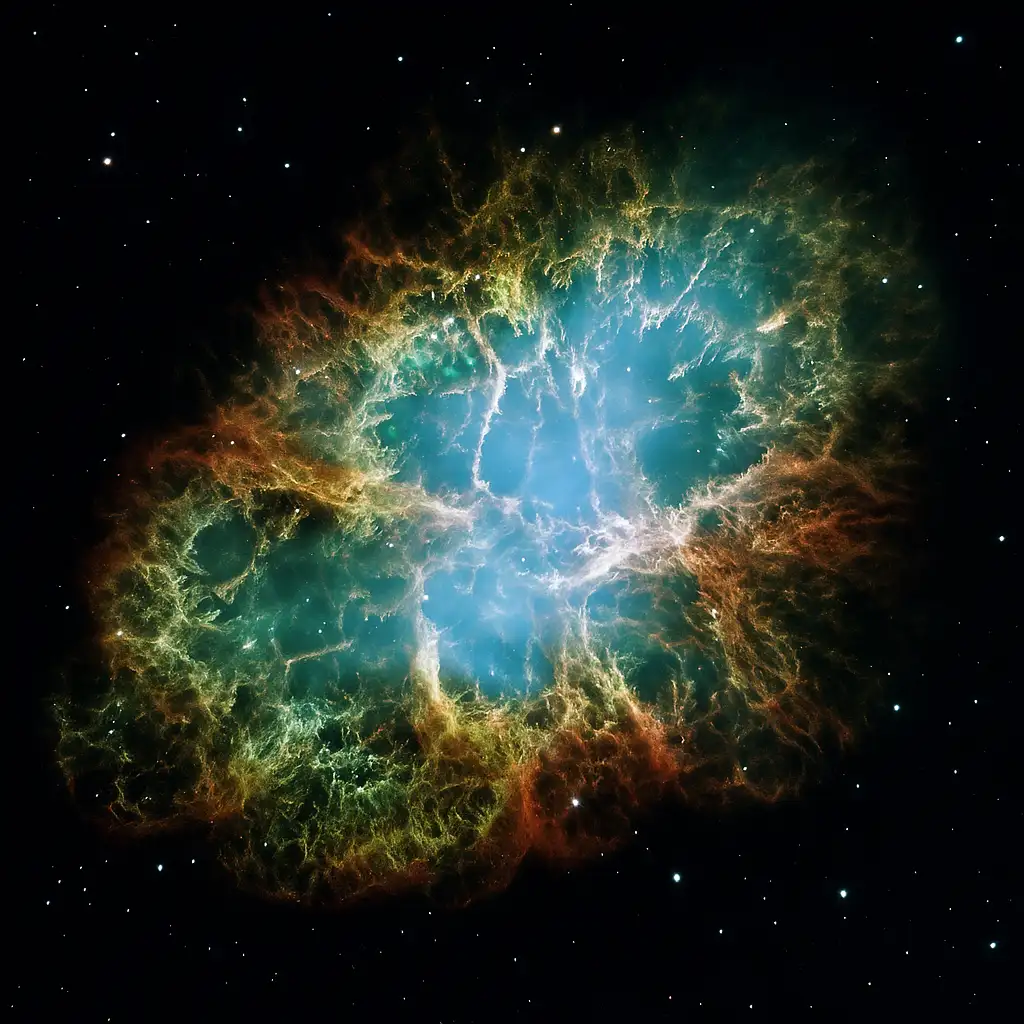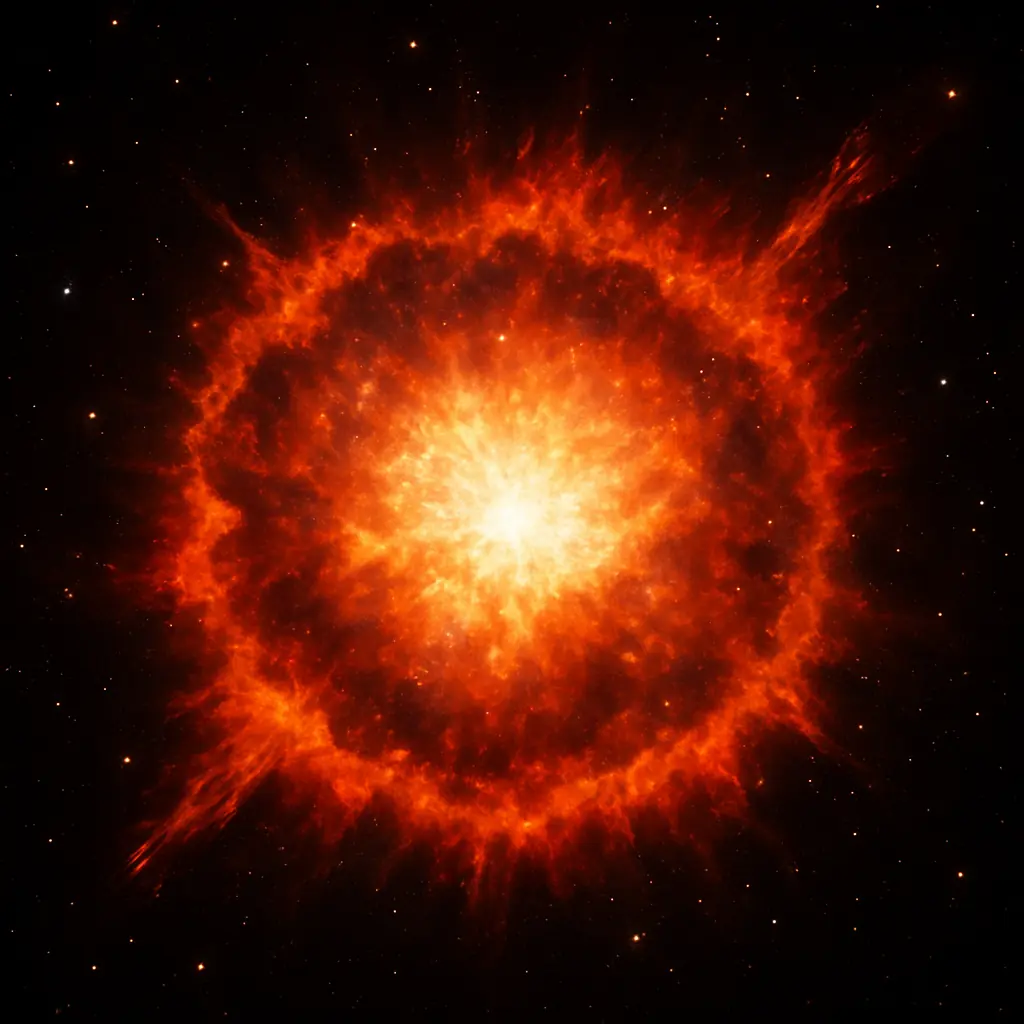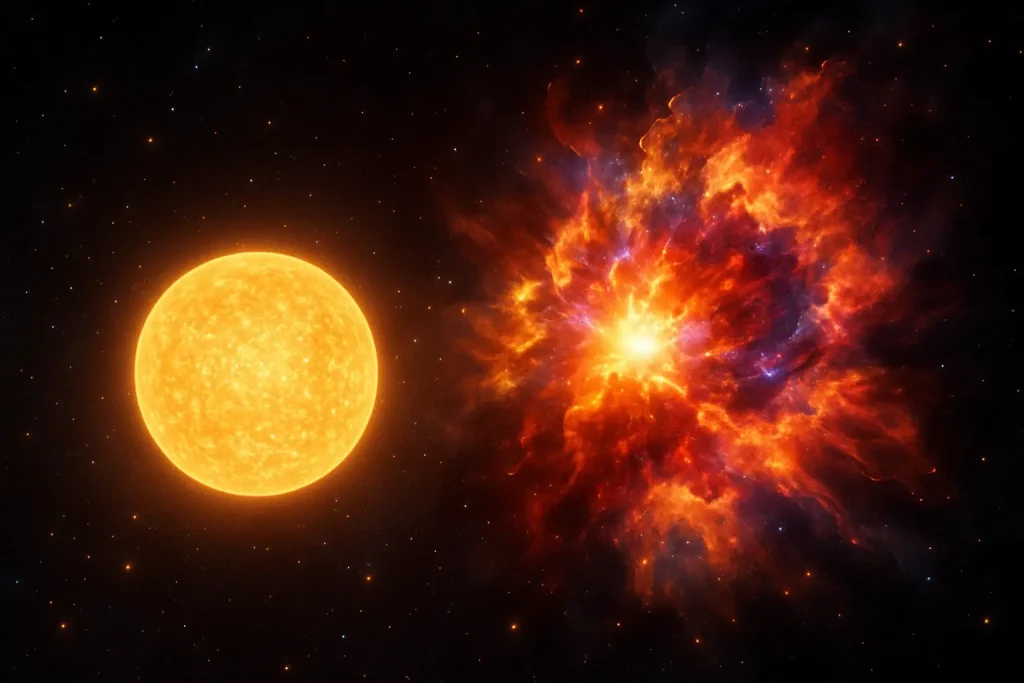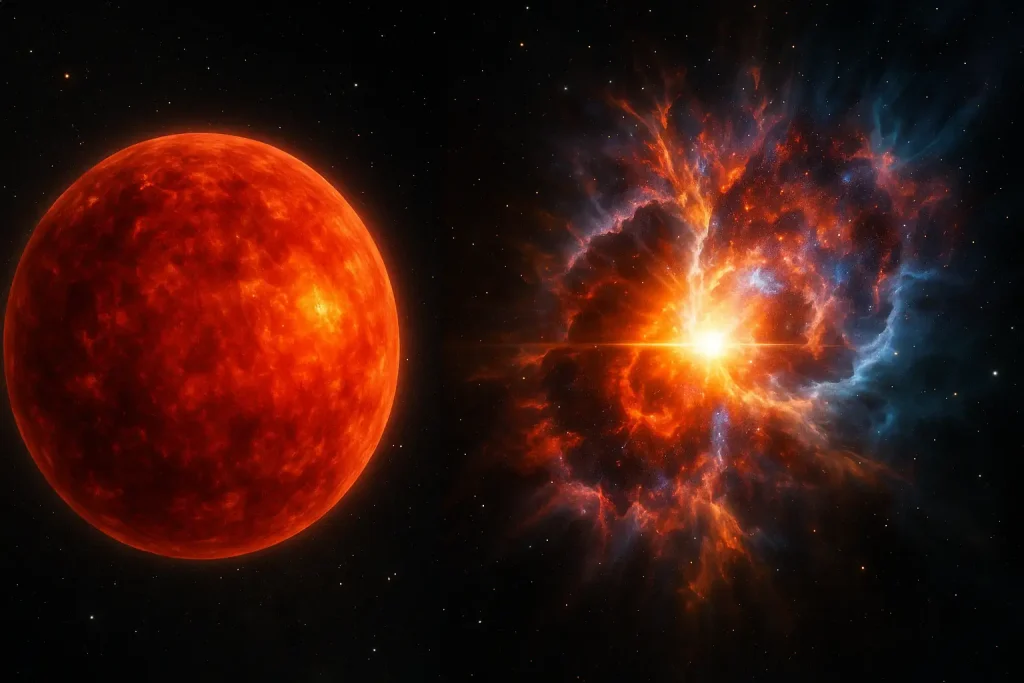Introduction
Imagine a star so massive that its death outshines an entire galaxy. This is a supernova, a star’s explosive end. Supernovae have amazed humans for centuries. Ancient Chinese astronomers noted a “guest star” in 1054 AD. That event created the Crab Nebula we see today. Tycho Brahe saw a supernova in 1572, shaking ideas of a fixed sky. Johannes Kepler observed one in 1604, adding to the wonder. These events forge heavy elements and drive cosmic change. Supernovae help us measure the universe’s vastness. This guide covers their types, formation, observations, and importance.

Types of Supernovae
Supernovae split into two main groups: Type I and Type II. Scientists use spectra to classify them. Type I supernovae lack hydrogen lines in their light. Type II supernovae show hydrogen clearly.
Type I has subtypes: Ia, Ib, and Ic. Type Ia supernovae come from white dwarfs in binary systems. They explode with consistent brightness, aiding distance measurements. Astronomers call them “standard candles” for this reason. Type Ib supernovae show helium but no hydrogen. Type Ic lack both hydrogen and helium. Both come from massive stars shedding outer layers.
Type II supernovae stem from massive stars’ core collapse. They show hydrogen in their spectra. Subtypes include II-P, with a brightness plateau, and II-L, with a steady decline. Rare types, like superluminous supernovae, shine far brighter than usual. Type Iax, a faint Type Ia variant, also exists. Each supernova type teaches us about stellar endings.

Formation Mechanisms
Supernovae arise from two key processes. Thermonuclear runaway drives Type Ia supernovae. Core collapse powers Type II and some Type I. A third process, electron capture, is less common.
Type Ia starts with a white dwarf. It pulls matter from a companion star. When it hits 1.4 solar masses, it explodes. This limit is called the Chandrasekhar limit. The blast comes from runaway carbon fusion. Some suggest two white dwarfs merging can also trigger it.
Core-collapse supernovae begin with massive stars. These stars fuse elements up to iron. Iron fusion takes energy, not gives it. The core collapses under gravity in seconds. A shockwave then blasts the outer layers off. Neutrinos carry away most of the energy. The core may become a neutron star or black hole.
Electron-capture supernovae involve stars of 8–10 solar masses. Their cores collapse when electrons get captured. This rare process leaves neutron stars. Each mechanism shapes the supernova’s outcome.

Observations of Supernovae
Supernova observations have grown advanced. Early records relied on the naked eye. The supernova of 1054 AD amazed ancient watchers. SN 1987A, a Type II event, stunned modern astronomers. It occurred in a nearby galaxy, the Large Magellanic Cloud. Its blue supergiant origin was unexpected.
Today, light curves track supernova brightness. Type Ia peaks after 20 days reliably. Type II varies more in its glow. Spectra show what’s inside: silicon for Type Ia, hydrogen for Type II. Telescopes like Hubble capture supernovae in detail. Neutrino detectors caught signals from SN 1987A. Gravitational waves may soon reveal more.
Observations span radio waves to gamma rays. They help classify supernovae and study their physics. Each sighting adds to our cosmic knowledge.

Significance of Supernovae
Supernovae shape the universe profoundly. They create heavy elements like gold and iron. Type Ia supernovae make nickel-56, which decays to iron. Massive stars use slow neutron capture before exploding. Rapid neutron capture in supernovae forms rare elements.
These elements spread into space. New stars and planets form from them. The iron in your blood came from a supernova. Supernovae also spark star formation. Their shockwaves compress gas clouds nearby. Yet, they can also stop it by clearing gas out.
Type Ia supernovae measure cosmic distances. Their steady brightness showed the universe’s expansion is speeding up. This hinted at dark energy’s existence. Supernova remnants like the Crab Nebula enrich galaxies.

Leave a Reply